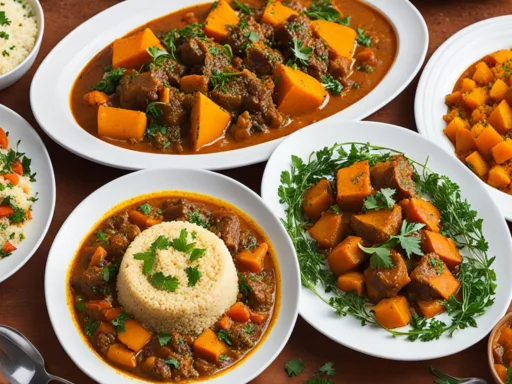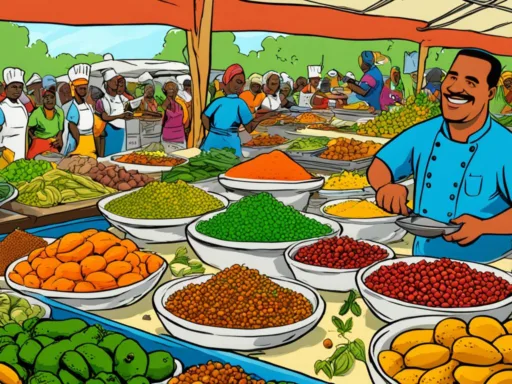The cultural fabric of Guinea is intricately woven with an array of languages, each playing a pivotal role in the nation’s identity. The rich linguistic landscape is marked by languages spoken in Guinea, showcasing a tapestry of both indigenous tongues and the official language inherited from a colonial past. Notably, French in Guinea stands as the official language, a symbol of historical ties, yet primarily adopted as a secondary language by its citizens.
These vivid threads of communication are not limited to the realms of officialdom alone. Far from the halls of administration, at the heart of Guinea’s towns and villages, thrum the beats of six recognized national languages. They nourish the roots of cultural heritage and dance through daily exchanges, from market barter to educational pursuits. While the languages of Pular, Maninka, and Susu rise as the majority voices in their respective regions, numerous others echo throughout Guinea, gracing the air with their unique sounds and rhythms. Each linguistic note adds depth and color to the narrative of this West African nation.
Key Takeaways
- Guinea boasts a rich diversity of indigenous languages alongside French, the official language.
- Pular, Maninka, and Susu are the leading national languages, each predominant in specific regions.
- Despite the official status of French, it is mainly used as a second language, typifying Guinea’s multilingualism.
- In urban areas of Guinea, there’s a noticeable linguistic diversity with an average of 14 languages spoken in cities.
- The cultural identity of Guinea is deeply influenced by the coexistence and interactions of its many languages.
Linguistic Landscape of Guinea
The Republic of Guinea serves as a unique crucible for linguistic diversity, harmonizing a blend of indigenous languages and the pervasive influence of its official language. As modern Guinea navigates through its colonial legacy, the sustained prominence of French is palpable within its societal and bureaucratic echelons. This narrative unfolds within the bustling urban centers as well as the more reposeful rural landscapes, each echoing a different linguistic symphony.
The Role of French as the Official Language
The thread of French in Guinea weaves through the nation’s fabric as the dominant cord of official dialogue. Its tenure as the official language is deeply rooted in history, finding relevance today in governance and official institutions. Contrary to its administrative prevalence, French is not the maternal tongue for most Guineans but rather a second language for the educated minority, bridging linguistic gaps across diverse ethnic backgrounds.
Indigenous Languages With National Status
Giving voice to cultural uniqueness, several indigenous languages in Guinea hold national status and bolster the country’s identity. Among these, Fula (or Pular), Maninka, Susu, Kissi, Kpelle (also known in French as Guerzé), and Loma stand out. Beyond the fabric of everyday life, these languages serve as anchors for tradition and community, simultaneously marking regional identities and fostering unity within the nation.
Linguistic Diversity in Urban vs. Rural Areas
Guinea’s linguistic diversity stands as a tale of two realms: the urban mosaic and the rural tapestry. Metropolitan hubs, particularly Conakry, burgeon with a mélange of languages, reflective of complex migratory patterns and a confluence of cultures. A contrast emerges in rural regions, where linguistic plurality wears a subtler guise, although no less significant in the daily lives of the inhabitants. This dichotomy is a testament to the adaptability and vibrancy of Guinea’s languages.
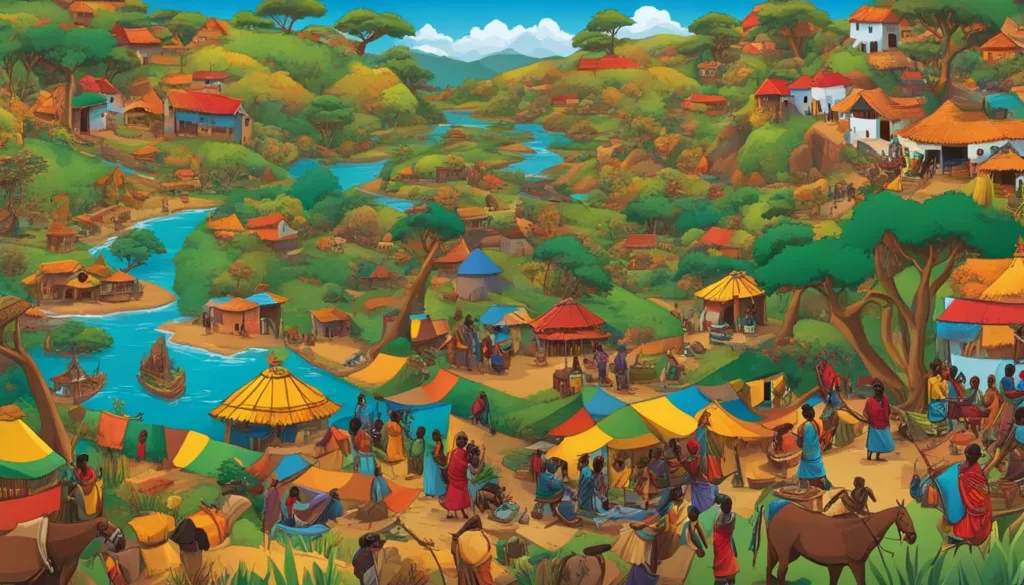
In essence, the official languages of Guinea and its indigenous languages orchestrate a polyphonic landscape. It’s a realm where French dominates the official script, yet in the daily chorus of the streets, marketplaces, and schools, the mellifluous tones of Guinea’s many tongues resonate with an authenticity that is undeniably and richly Guinean.
Major Indigenous Languages of Guinea
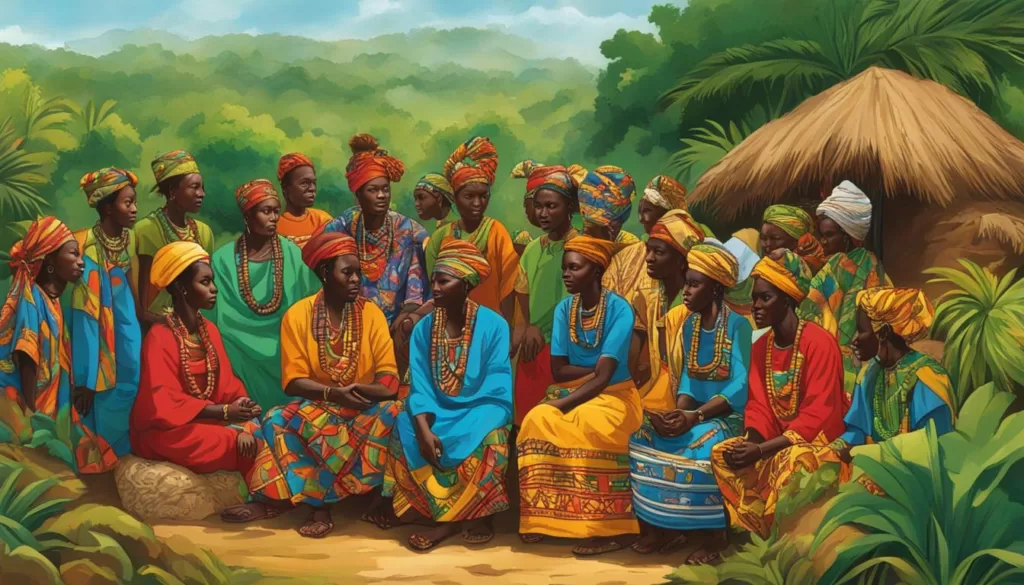
Guinea’s linguistic richness is encapsulated in its national languages which are key to cultural identity and regional communication. Here, we explore the major indigenous tongues that echo through the nation’s heartlands and marketplaces, shaping the everyday lives of the Guinean people.
The Fula Language in Middle Guinea
At the crossroads of trade and tradition in Middle Guinea stands the Fula language Guinea, also known as Pular. This language swathes the regions of Labé and Mamou, serving as a vibrant medium of communication for the majority. Its linguistic dominance in these parts is not only a marker of ethnic identity but also a bridge connecting various communities.
Maninka Language and Its Influence
In the northeastern expanse of Upper Guinea, particularly the Kankan region, the Maninka language Guinea resounds with historical significance and current elevation. The famed Kankan dialect birthed the N’Ko script, revolutionizing written Manding and invigorating literacy efforts in Guinea and beyond, a testimony to the language’s profound and lasting influence.
Susu Language Dominance in Maritime Guinea
Along the swaying palms and bustling ports of Maritime Guinea, the Susu language asserts its prominence. With the majority in Kindia Region and even in the capital, Conakry, making it their language of choice, Susu language Guinea emerges as an unmistakable voice within the diverse linguistic composition of the nation’s southwest.
| Language | Region | Percentage of Speakers |
|---|---|---|
| Fula (Pular) | Middle Guinea | 35% |
| Maninka | Upper Guinea | 25% |
| Susu | Maritime Guinea | 18% |
Languages Spoken in Guinea: A Closer Look at Lesser-Known Languages
Guinea’s extraordinary linguistic mosaic is enhanced by the presence of several lesser-known languages that are integral to the nation’s cultural heritage. Among these, the Kissi language, Kpelle language, and Maninka language in Guinea paint a vivid portrait of the nation’s rich ethnolinguistic tapestry.
While these indigenous languages may not have the same number of speakers as the national languages, they embody the diversity and complexity of Guinea’s cultural identity. Their existence underscores the importance of linguistic preservation and the promotion of cultural diversity.
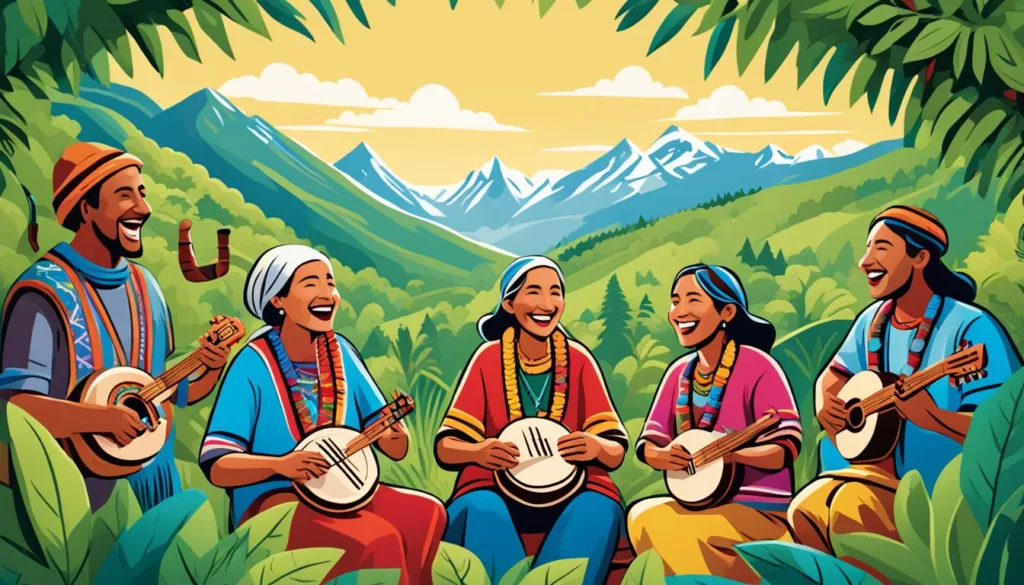
In regions such as Nzérékoré and Yomou, the Kpelle language Guinea is predominantly spoken, having a crucial role in the daily lives and cultural practices of the local communities. The Kissi language Guinea, found in Guéckédou and Kissidougou, offers insights into ancient traditions woven into modern Guinea. Meanwhile, the Kono language, primarily spoken in Lola, further adds to the linchpin of linguistic diversity in the southern parts of the country.
| Language | Regions Spoken | Notable Cultural Significance |
|---|---|---|
| Kissi | Guéckédou, Kissidougou | Guardian of ancient precolonial traditions |
| Kpelle | Nzérékoré, Yomou | Key language for local storytelling and folklore |
| Maninka | Widely throughout Guinea | Close associations with the historic Manding Empire |
Each language not only serves as a means of communication but also holds a mirror to the past, embracing the stories and wisdom of generations. They facilitate not just conversation but a communion of peoples with their ancestors through rituals, songs, and tales deeply rooted in their respective languages.
Understanding these languages offers a gateway to experiencing the Maninka language in Guinea not just as a form of dialogue but as an expression of the nation’s soul, interlacing history with the vibrancy of contemporary Guinean life. This linguistic richness is a treasure trove for linguists, anthropologists, and cultural connoisseurs, providing a deeper understanding of Guinea’s societal fabric.
French Influence and Language Education in Guinea
Steeped in its historical progression to the present day, the influence of French in Guinea can be observed as a central pivot in several vital sectors of society. More than just a colonial remnant, French commands a significant presence in the realms of business and governance, carving its niche as an indispensable part of Guinean administrative life.
French Usage in Business and Governance
In the arena of commerce and state affairs, French serves as the lingua franca, notwithstanding Guinea’s multitude of indigenous languages. It is within the corridors of power and throughout the bustling business districts that French facilitates intricate interactions and complex transactions. Moving beyond mere communication, it has evolved into the language of legality and officialdom, signifying a bridge between diverse ethnic groups and helping to unify a nation under a shared bureaucratic vernacular.
Impact of French on Education and Media
The sphere of education in Guinea bears a significant hallmark of French influence, with it being the principal medium of instruction across most educational institutions. This language education Guinea employs French not only as a tool for knowledge dissemination but also as a means of preparing future generations to engage with international communities. Similarly, its penetration into the media sector reflects its crucial role in shaping and informing public discourse, affording it a vehicle for widespread reach and influence.
| Sector | Role of French | Impact on Society |
|---|---|---|
| Government | Administrative language | Enhances bureaucratic coherence |
| Education | Primary language of instruction | Prepares students for global integration |
| Media | Language for news and entertainment | Broadens accessibility and understanding |
| Business | Lingua franca in commerce | Facilitates trade and interethnic communication |
These dimensions of French usage reflect deeply on how the former colonial tongue has been nativized into a vehicle for Guinea’s progress. Beyond this, French is pivotal in creating a cosmopolitan tapestry in the capital city of Conakry, knitting together an urban population rich in linguistic diversity. It is this blend of historical bearing and contemporary functional adoption that cements French as a cornerstone within Guinean society.
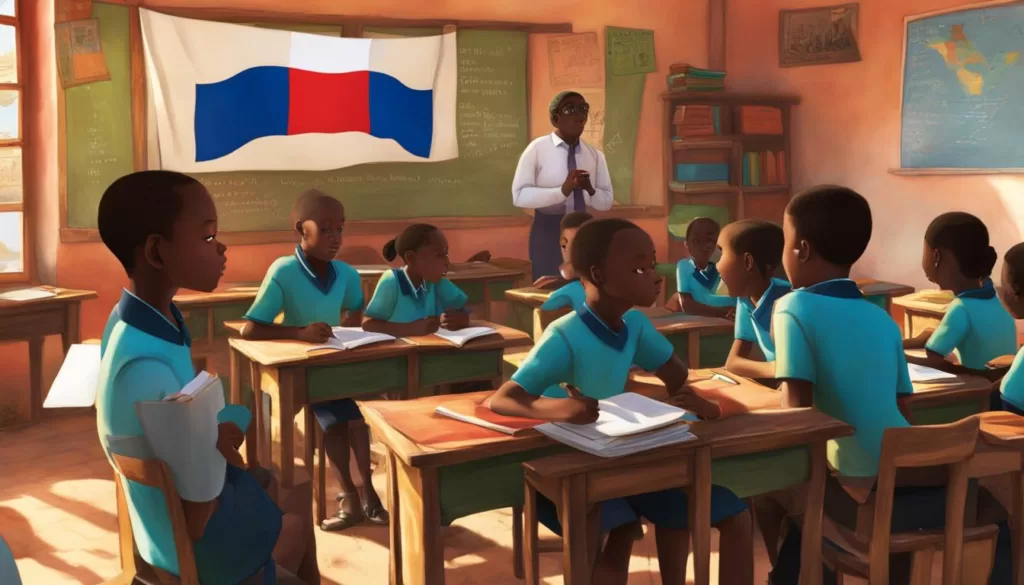
Conclusion
In delving deep into the linguistic profile of Guinea, we’ve traversed a country rich in dialogue and tradition. The multitude of languages spoken in Guinea forms a colorful collage, reflective of the nation’s vibrant cultural heritage. This tapestry is anchored by French, serving as the official language and a unifying force in formal settings and institutions. Yet, the real essence of Guinea’s linguistic identity is found within its bustling markets, lively schools, and community gatherings, where indigenous languages thrive.
Significantly, the indigenous tongues such as Fula, Maninka, and Susu are not just modes of communication; they are beacons of the Guinean spirit. Each region speaks its own story through these languages, delineating a unique cultural landscape across the nation. They carry the weight of history, embody the present, and whisper to the future, holding the collective memories and aspirations of the peoples of Guinea.
To appreciate Guinea in its entirety, one must recognize the profound role that the confluence of languages plays. Embracing this diversity is embracing Guinea itself – a land where the past is folded into the present, and where language is more than a tool; it is the very substrate of the country’s soul. It’s this intricate weave of languages spoken in Guinea that adds to the rich pattern of its cultural heritage, making Guinea not just a nation but a narrative, ever-evolving and deeply human.
FAQ
What is the official language of Guinea?
French is the official language of Guinea. It is used in government, business, and education, despite being primarily a second language for many Guineans.
Are there any indigenous languages with national status in Guinea?
Yes, along with French, Guinea recognizes six indigenous languages with national status: Pular (Fula), Maninka, Susu, Kissi, Kpelle, and Toma.
What is the level of linguistic diversity in Guinea?
Guinea is home to remarkable linguistic diversity, with twenty-two major languages identified according to statistics. Urban areas display notably higher linguistic variety compared to rural regions.
Which indigenous language is most widely spoken in Guinea?
The most widely spoken indigenous language in Guinea is the Fula language, also known as Pular, particularly prevalent in Middle Guinea.
Can you tell me about the Maninka language and its influence in Guinea?
The Maninka language is extensively spoken in Upper Guinea, particularly in the Kankan region. It has influenced the development of the N’Ko script, a written form used to unite various Manding languages, and is significant in the cultural and educational landscape of Guinea and neighboring countries.
In which regions of Guinea is the Susu language predominantly spoken?
The Susu language is predominantly spoken in Maritime Guinea, especially in the Kindia Region and the capital, Conakry.
What are some of the lesser-known languages spoken in Guinea?
In the region known as Guinée Forestière, lesser-known languages such as Kissi, Kpelle, and Kono are primarily spoken. They contribute significantly to Guinea’s rich linguistic diversity.
How does the French language impact business and governance in Guinea?
French plays a central role in Guinea’s business and governance sectors. It operates as the lingua franca in these areas, bridging communication gaps due to the multilingual nature of the population.
What role does French play in the education system and media of Guinea?
French has a profound impact on education in Guinea, being the primary language of instruction. It is also a significant language in Guinea’s media, both in print and broadcast formats.
How does the language landscape reflect Guinea’s cultural heritage?
The linguistic landscape of Guinea, with French as the official language and a variety of indigenous languages, showcases the rich cultural heritage of the country. Each language carries with it the history, traditions, and identity of the Guinean people.



